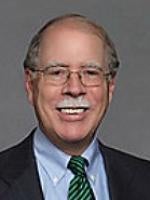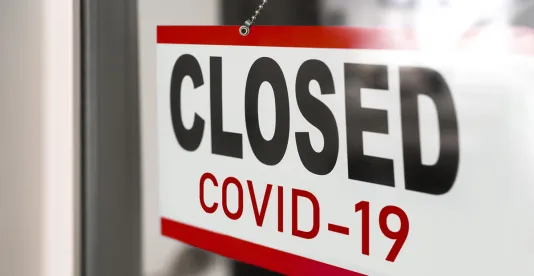Overview
On April 9, 2020, the Department of the Treasury (Treasury) and the Federal Reserve Board (Federal Reserve) announced several additional initiatives aimed at promoting maximum employment and stabilizing the economy, including the Main Street Lending Program. The Main Street Lending Program, which implements separate provisions of the CARES Act authorizing the establishment of an emergency loan program for midsize businesses and of a main street lending program, establishes new loan facilities for small and midsize businesses with up to 10,000 employees or with revenues less than $2.5 billion. The Federal Reserve announcement, which provides preliminary details and term sheets regarding the Main Street Lending Program, can be found here. As explained further below, these loans can be either new loans or expanded existing loans, with terms of up to four years and with principal and interest payments deferred for one year.
Importantly, the Main Street Lending Program as announced does not specify a minimum number of employees for borrowers — the 500-employee floor stated in the CARES Act for the midsize lending facility has been omitted. In addition, the announcement expressly states that companies that borrow from the Small Business Administration’s Paycheck Protection Program (PPP) may also participate in the Main Street Lending Program.
From the $454 billion allocated by the CARES Act for support of Federal Reserve credit facilities, the Treasury will make a $75 billion equity investment in a special-purpose vehicle (Main Street SPV) that will be established by the Federal Reserve. A Federal Reserve Bank will commit to lend to the Main Street SPV on a recourse basis, providing leverage that is expected to result in up to $600 billion in new or expanded bank loans to eligible borrowers. The Main Street SPV will support two separate lending facilities: (i) the Main Street New Loan Facility (MSNLF), applicable to new loans to eligible borrowers, with a maximum loan size of $25 million and (ii) the Main Street Expanded Loan Facility (MSELF), which is available only to fund increases in previously existing term loans, with a maximum loan size per borrower of $150 million. Additional details regarding these lending facilities are provided below. Details about these facilities and the Main Street Lending Program are subject to additional guidance and modification by the Treasury and Federal Reserve in the forthcoming weeks.
Federal Reserve Request for Comment
The Federal Reserve’s announcement and the included term sheets do not include the detailed procedures that will be required for full implementation of the Main Street Lending Program, and numerous details of the program are not yet resolved. However, in recognition of the differing needs of businesses in the current crisis, the Federal Reserve is soliciting comments through April 16, 2020, from lenders, borrowers, and other stakeholders “to make sure the program supports the economy as effectively and efficiently as possible while also safeguarding taxpayer funds.” The Federal Reserve announcement provides this feedback form for the submission of comments.
What businesses qualify for the Main Street Lending Program?
Eligible borrowers under both the MSNLF and the MSELF include any business organization (profit or nonprofit) with either a maximum number of 10,000 employees or a maximum amount of $2.5 billion in annual revenues (regardless of the total number of employees) that meets all the following conditions:
-
It is a business created or organized in the United States or under the laws of the United States that has significant operations in and a majority of employees in the United States.
-
It was in good financial standing before the crisis.
-
It has not otherwise received adequate economic relief in the form of loans or loan guarantees under the CARES Act.
-
It is not a participant in the Federal Reserve’s Primary Market Corporate Credit Facility.
In addition, eligible borrowers that participate in the MSNLF may not participate in the MSELF, and MSELF participants may not participate in the MSNLF.
How many employees must an eligible borrower employ to qualify for the Main Street Lending Program?
Eligible borrowers do not need to employ a certain number of employees. However, in order for a company with more than 10,000 employees to be an eligible borrower, its annual revenues cannot exceed $2.5 billion.
What is the minimum loan amount?
Loans are available starting at $1 million under both the MSNLF and the MSELF.
What is the maximum loan amount?
Under the MSNLF, loans are available up to the lesser of:
(i) $25 million; or
(ii) An amount that, when added to the eligible borrower’s existing outstanding and committed but undrawn debt, does not exceed four times the eligible borrower’s 2019 EBITDA.*
Under the MSELF, loans are available up to the lesser of:
(i) $150 million;
(ii) Thirty percent of the eligible borrower’s existing outstanding and committed but undrawn bank debt; or
(iii) An amount that, when added to the eligible borrower’s existing outstanding and committed but undrawn debt, does not exceed six times the eligible borrower’s 2019 EBITDA.*
*The term sheets do not clarify whether the calculation for EBIDTA is driven by GAAP or whether the calculation of EBIDTA will allow for adjustments to eliminate one-time gains or losses.
What are the terms of loans under the Main Street Lending Program?
-
Interest Rate: Under the term sheets, the interest rate is SOFR adjustable rate plus 250–400 basis points.
-
Maximum Loan Term: The maximum loan term is four years.
-
Payment Deferment: Amortization of principal and interest may be deferred for one year.
-
Origination or Upsizing Fee: The eligible borrower is to pay a fee of 100 basis points of the principal amount of the loan with the MSNLF or of the upsized tranche of the MSELF.
-
Servicing Fee: The eligible borrower is to pay an annual loan servicing fee of 25 basis points of the principal amount of a lender’s participation in new loans under the MSNLF or in the upsized tranche of an expanded loan under the MSELF.
-
Collateral: The MSNLF term sheet specifies that new loans to eligible borrowers are to be unsecured term loans. Under the MSELF, it appears to be discretionary on the part of the lender as to whether additional collateral is required for the expanded loan. However, any collateral that secures a loan upsized under the MSELF, whether such collateral was pledged under the original terms of the loan or at the time of upsizing, will secure the Main Street SPV’s loan participation on a pro rata basis.
-
Facility Fee: Under the MSELF only, the eligible lender may require the eligible borrower to pay the facility fee. The eligible lender must pay the Main Street SPV a facility fee, which is 100 basis points of the principal amount of the loan participation purchased by the Main Street SPV. No facility fee is in place under the MSNLF term sheet.
-
Prepayment: There is no prepayment penalty.
-
Loan Forgiveness: Loans are not forgivable.
What restrictions apply to borrowers and lenders?
The Federal Reserve’s term sheets and the CARES Act impose several operational constraints on borrowers for both new facilities. Each participating borrower must certify as follows:
-
Need for and Use of Proceeds. The loan is necessary due to the exigent circumstances presented by the coronavirus disease 2019 (COVID-19) pandemic, and that, using the proceeds of the loan, it will make reasonable efforts to maintain its payroll and retain its employees for the term of the loan.
-
Workforce Retention. It will use the loan proceeds to retain at least 90% of the recipient’s workforce at full compensation and benefits through September 30, 2020.
-
Restoration of Workforce. It intends to restore not less than 90% of its workforce that existed as of February 1, 2020, and to restore all compensation and benefits to its workers no later than four months after declaration of the termination of the public health emergency by the Secretary of the Department of Health and Human Services.
-
Restrictions on Dividends and Stock Repurchases. It will not (i) pay dividends or make other capital distributions on its common stock or (ii) repurchase an equity security listed on a national securities exchange while the direct loan is outstanding except to the extent required under a contractual obligation existing on March 27, 2020, for the term of the loan and for a period ending one year after the loan is repaid. The Federal Reserve’s initial release does not indicate whether an exception to the dividend prohibition will be available to allow for tax distributions to owners of S corporations and other pass-through businesses.
-
Compliance with CARES Act Compensation Restrictions. It will comply with the executive compensation limitations set forth in section 4004 of the CARES Act:
-
No employee who earned over $425,000 in 2019 may receive (i) an increase in annual compensation for any 12-month period or (ii) severance payments in excess of two times 2019 total compensation.
-
An employee with 2019 compensation over $3 million is limited to total annual compensation of $3 million plus 50% of the amount by which the employee’s 2019 total compensation exceeded $3 million.
-
-
Not in Bankruptcy. It is not currently a debtor in bankruptcy proceedings.
-
United States Company. It is a US company, domiciled in the United States with significant operations, and a majority of its employees, located in the United States.
-
No Outsourcing. It will not outsource or offshore jobs for the term of the loan plus two years after completing repayment.
-
Honoring of Collective Bargaining Agreements. It will not abrogate existing collective bargaining agreements for the term of the loan and for a period of two years after completing repayment.
-
Neutral in Union Organizing Efforts. It will remain neutral in any union-organizing effort for the term of the loan.
Both eligible borrowers and eligible lenders must also certify the following:
- Debt. The lender will not use proceeds of the eligible loan or upsized tranche to repay or refinance preexisting loans or lines of credit. The borrower will not use the proceeds of the eligible loan or upsized tranche to repay other loan balances and may not repay other debt of equal or lower priority, with the exception of mandatory principal payments, unless the borrower has first repaid the eligible loan or upsized tranche in full.
- Lines of Credit. The lender will not cancel or reduce any existing lines of credit outstanding to the borrower, and the borrower will not cancel or reduce any of its outstanding lines of credit held with any other lender.
- Covered Entity. Lenders and borrowers will each be required to certify that the entity is eligible to participate in the facility, in light of the conflict of interest prohibition for covered entities under the CARES Act.
Which lenders are eligible to participate in the Main Street Lending Program?
Eligible lenders are US insured depository institutions (insured banks, savings associations, and credit unions), US bank holding companies, and US savings and loan holding companies.
How will the Main Street SPV fund lending under the Main Street Lending Program?
New Loans under the MSNLF. The Main Street SPV will purchase from a participating lender a 95% share of each new loan at par value, with the lender to retain 5% of the loan. The Main Street SPV and the lender will share risk on a pari passu basis.
Upsized Loans under the MSELF. The Main Street SPV will purchase from a participating lender a 95% participation in the upsized tranche of an eligible loan, provided that it is upsized on or after April 8, 2020, at par value. The Main Street SPV and the lender will share risk in the upsized tranche on a pari passu basis, although given that 95% of the loan will be purchased by the Main Street SPV, it appears that this is referring to the relationship to the collateral between the parties both before and after the transfer. Any collateral securing such an upsized loan, whether such collateral was pledged under the original terms of the loan or at the time of upsizing, will secure the loan participation on a pro rata basis.
What are the procedures for loan applications to lenders and for lenders’ loan sales to the Main Street SPV?
The Federal Reserve’s term sheets provide no information regarding either the application process for new loans or expanded loans under the Main Street Lending Program or the procedures for lenders to sell loan participations to the Main Street SPV.
We expect that additional details regarding both a borrower’s application for credit under the program and the mechanics of a lender’s sale of loans to the MSNLF or the MSELF will be forthcoming after April 16, 2020, the close of the comment period stated in the Federal Reserve’s announcement.
As a result, it is not expected that applications for new or expanded loans can be accepted by lenders under the Main Street Lending Program until the week of April 20–24, 2020. Eligible borrowers should, however, contact their banks to discuss potential loan applications prior to the Federal Reserve’s release of final guidance.
When will the Main Street Lending Program terminate?
The Main Street SPV will cease purchasing participations in loans on September 30, 2020, unless the facility is extended by the Federal Reserve and the Treasury. The Federal Reserve Bank will continue to fund the Main Street SPV after such date until the underlying assets mature or are sold.






 />i
/>i
